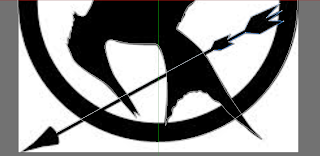Modelling a tap.
Firstly i needed to create a cube in order to model it into a tap. I need to set the sizes to
X - 1000m
Y - 20m
Z - 300m
I also need to make 8 segments for X and 3 segments for Z. Once had made all these changes then make the cube editable.
Next i'm going pull out the polygons and rotate them to create the neck for the tap. To select the faces i need to switch to polygon mode in tools then click the polygons. I need to make sure i'm on live selection to click the 4 faces I'm going to extrude. Now i need to extrude the polygons by clicking on structure then extrude. I need to extrude the polygons 150m by inputing 150 in the offset.
1st - input 30 P under rotation
2nd - extrude 150m again
3rd - again rotate the polygons 30 degrees for P
4th - extrude 150m
5th - input 20 degrees for P rotation
6th - select normal scale tool and scale polygons down by 50%
7th - back to the extrude tool and extrude 200m
8th - rotate again by inputing 10 under P in the rotation coordinates manager
9th - extrude 100m and extrude again 150m. This ensures that you have the proper size of polygons when making the spout
10th - select the two bottom polygons and extrude them 100m
Once you've extruded the polygons you need to switch to the extrude inner tool in structure and input 30m in the offset and click apply, switch back to extrude tool and input -150m in the offset and click apply.
Drag the cube and make it a child of the HyperNURBS. This makes it rounded.
Hide this part of the tap by clicking the top grey dot to the right of the object manager until it turns red.
To make the knobs i create another cube and make it editable. In polygon model select all the side faces of the cube and extrude them 150m.
I then switch to normal scale tool and scale them down to 50%.
Then i use the extrude tool again and extrude the polygons 50m. Switch back to normal scale and input 200%.
Extrude the polygons again by 200m. Next i select the top middle polygon and extrude it 10m. I also need to extrude the bottom middle polygon 200m then extrude it again another 200m. To make the base i need to use the normal scale tool and scale the bottom polygon 200% then make a final extrusion of 10m.
Create a HyperNURBS object and drag the cube into it to make it a child.
Unhide my faucet and i will notice the knob is much bigger than it so i select the know and scale it down 50%, i can do this either by hand or entering 0.5m in all the axes in coordinates manager. I need to position the knob at
X - 400
Y - 255
Z - 0
No i need to create a symmetry object and drag and drop the knob object in. Now i have two knobs on each side of the faucet.
Next i add a material and drag it onto my objects.

















































